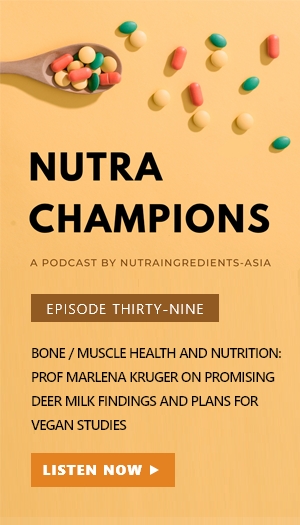OPINION: “Once in a generation” chance to improve Australia’s supplement laws

There is currently a two-tiered risk-based system utilised for the regulation of prescription, over-the-counter and complementary medicines in Australia.
The vast majority of complementary medicines are in the lower risk listed category, meaning they contain well-known ingredients that have been permitted for use by the Therapeutic Goods Administration and are indicated for lower level health maintenance or enhancement of minor self-limiting conditions. These medicines remain an important part of a self care approach for millions of Australians.
Established in 2014, the Review of Medicines and Medical Devices Regulation (MMDR), led by Professor Lloyd Sansom AO, provided two reports to government, the first on the regulatory framework for medicines and medical devices and the second on the regulation of complementary medicines and advertising of therapeutic goods. The Health Minister announced the Government response to the review in September 2016, accepting the majority of the panel’s 58 recommendations.
A review of this magnitude for the Australian complementary medicines sector has been described as a once in a generation opportunity to achieve a balance between pre and post market activities for low risk medicines that reduce red tape whilst upholding consumer safety.
Competitive agenda
The implementation of the review recommendations also comes at a time when the Federal Government is highly cognisant of the need for Australia to remain competitive on the global stage. Hence, recommendations are consistent with the Australian Government’s Industry Innovation and Competitiveness Agenda, such as removing regulation that duplicates trusted overseas processes except in cases where unique Australian regulations can be justified.
To implement this comprehensive package of reforms, the regulator is working alongside all stakeholders, including industry, researchers, academics and consumers. Work is underway on recommendation thirty-eight, which directs the TGA to establish a list of ‘permitted indications’ from which sponsors must exclusively draw from when listing on the Australian Register of the Therapeutic Goods (ARTG).
The current draft list of permitted indications is open for public consultation and contains 1,345 indications that are considered to meet the TGA’s eligibility criteria and determined to be appropriate for low risk listed medicines.
Understandably, there are concerns that, if the list is too restrictive, it will create unforseen challenges for the development of innovative new products and for the Australian industry to compete both on the national stage, under a backdrop of higher level health claims for foods, and on the global stage against products that are not as tightly regulated.
At the same time, there are some industry critics who have misunderstood the intent behind the permitted indications list, which is not to pre-approve a body of evidence related to an individual indication that can then be used across a range of products. The availability of an indication on the list does not imply government endorsement, as medicine sponsors will still be required to demonstrate that evidence is held supporting the use of the indication within individual product formulations.
The review of evidence related to individual products is incorporated as part of the listing compliance functions of the TGA’s Complementary Medicines Branch, which will be doubling review activities under the new reforms.
Accurate information
Importantly, pre-approval of evidence will become an option under the new assessment pathway being developed for listed medicines with the implementation of recommendation 39. The Government has also agreed that the TGA develop a monograph system (recommendation 46) that has the potential to improve the availability and accuracy of information on commonly used active ingredients for consumers and improve efficiencies for industry. Such monographs would document the evidence supporting the efficacy of the ingredients for specific indications and other relevant information.
An assessment tool has been developed by the TGA for the purpose of determining that an indication meets the eligibility criteria for inclusion in the list and therefore is considered suitable for use in listed medicines. Relevant considerations include: that the indication is describing a therapeutic use, contains an action and a target term, only refers to lower level health enhancement/health maintenance indications or symptom relief of a non-serious disease, and that the terminology used is consistent with the medicine paradigm.
The tool includes further questions to distinguish that the indication sits firmly within a lower risk context, for example: does not contain a prohibited or restricted representation, does not imply a cure or is effective in all cases and must be capable of complying with the Therapeutic Goods Advertising Code.
While there is still considerable work ahead, once implemented, the reforms to the regulation of complementary medicines will benefit consumers through increased transparency measures, provision of new pathways where evidence of efficacy will be reviewed by the TGA prior to market, and strengthened compliance powers – whilst continuing to uphold some of the strictest safety and quality standards globally for this category of goods.
Emma Burchell is head of Regulatory Affairs for Complementary Medicines Australia and an expert member of the Standards Australia National Mirror Committee (HE-031 Traditional Chinese Medicine).











